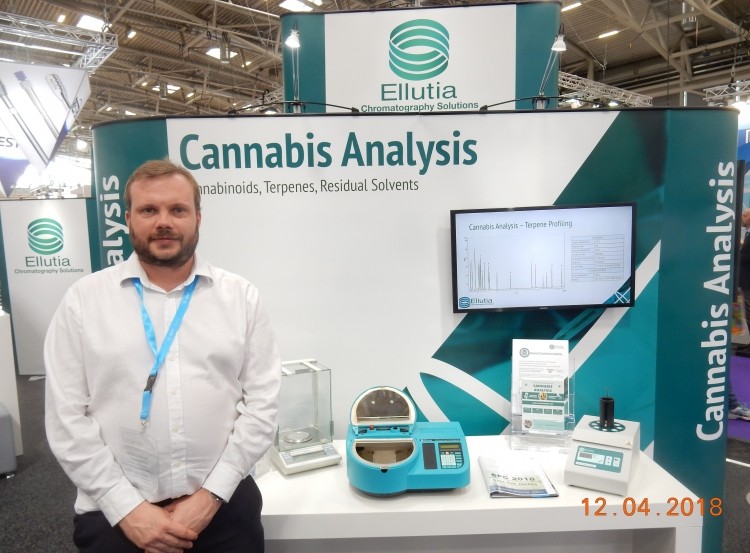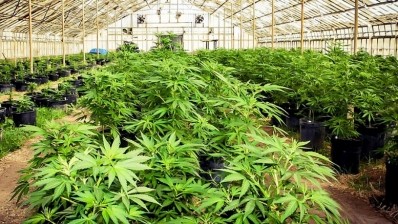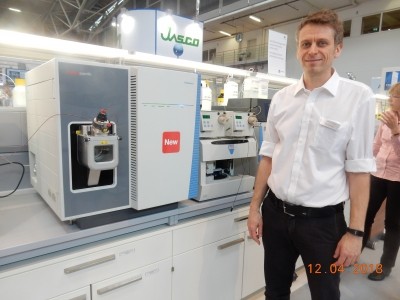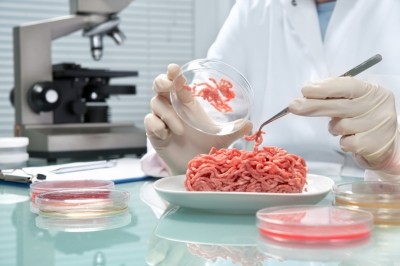Dispatches from Analytica 2018
Ellutia: Cannabis sector knows it needs to test but does not know where to start

The market is rapidly expanding and as it evolves so does use of technology to ensure quality of the end product.
Cannabidiol (CBD) is the second most commonly found cannabinoid in cannabis and hemp plants after tetrahydrocannabinol (THC), which is associated with the psychoactive properties of marijuana.
Ellutia's range of gas chromatography (GC) instruments can be used for potency testing, terpenes profiling and residual solvents analysis.
New market for analytical testing
Andrew James, marketing director for Ellutia, said it has identified a want and need for testing.
“There is a real need through the production chain and the people we speak to know they need to do the testing but they don’t know where they need to start. I don’t think many people that went into this industry originally were ever planning on the need for analytical testing. But they recognise it is a requirement now," he told us at Analytica 2018 in Munich.
“At the moment, certainly in the US, you will have some large testing laboratories and besides that the growers, or people that process, extract and then use that extract to refine it into a final product, many of them are relying on external testing labs and they are finding it takes a long time to get results.
“Some of the ones we have spoken to have said they will send a sample off and won’t get a result for four to six weeks sometimes and that is hindering their business and almost forcing people to the point where they are not bothering to test.”
Netherlands has coffee shops where cannabis can be consumed and purchased for off-site consumption.
Some member states only recognise CBD as a medicinal product.
The European Industrial Hemp Association (EIHA) asked Europe last year to recognise CBD and hemp as safe ingredients in food, supplements and cosmetics.
GC novice to expert
James said there is still little consistent regulation and that is what industry needs.
“It needs standardisation of methods and testing to take away the stigma that is associated with it. People want to know what they are buying and if you buy it in one place that it has had the same test done as somewhere else,” he said.
“Equally, in terms of regulations, they have to be careful not to make it unattainable for processors to be able to test it. It would be the wrong direction to say this has to be done on hundreds of thousands of pounds worth of equipment as it makes it too expensive and it will be avoided.”
Ellutia has customers in Amsterdam, Barcelona and America and recently installed a GC in the UK for a firm processing hemp extracts and dealing with CBD.
One customer in Amsterdam – Shamanics – went from having no GC experience to experts in reading what a chromatogram means.
“From looking at the terpene and cannabinoid profiles they can tell you ‘this one was harvested too early because there are these levels of cannabinoids or look at the terpenes and go ‘this was dried in this way and wasn’t very good’. They can accurately profile what strain of cannabis it is and how it was processed,” said James.
“They buy in big vats of already processed extract so want to check it has been properly cleaned. They’ve found the benefits of being able to do these sorts of things has helped them identify when suppliers have been supplying things that weren’t the levels they said they were and they potentially found one which looked like it had been adulterated with something else.
“They’ve got a customer who is moving into edibles and we’ve done some work with them on extracting from food products. It is a similar process across the chain; it is basically a liquid extraction and injection into GC.”
Variety of testing
James said the 200 Series GC was designed for education as the first point for those that wanted to learn about the technique and it is now seeing cannabis customers have the same requirements.
“We look at potency testing and the neutral and acidified versions of cannabinoids. Quite often that is done on HPLC because when you inject an acidic version of a cannabinoid into a GC injector the heat converts it into the neutral form so you cannot always see it. But if you do a derivatization before your injection that allows you to do both,” he said.
“People are looking a lot of terpenes, at the fragrance and flavour profiles of them. Depending on the extraction method used there is a good chance there may be some solvents left over and if you are turning it into a product someone is going to consume you can’t have those present.
“At the moment we don’t do much work with pesticide residues, mainly because there is such a wide variety that you need a mass spectrometer detector and once you get to mass spec you are going up a level of cost and skill to interpret the data. At the moment we are focussing on applications that can be performed on a Flame Ionisation Detector (FID).”

















